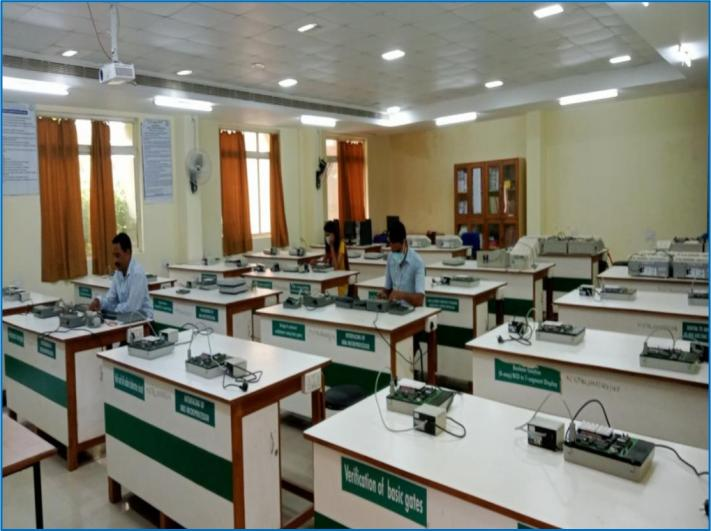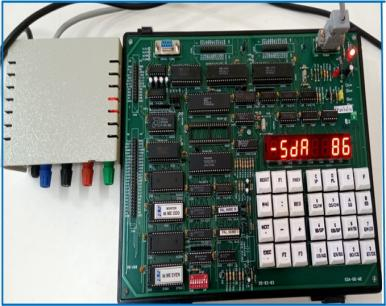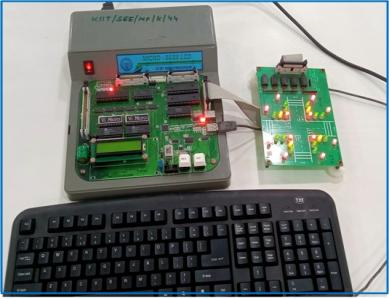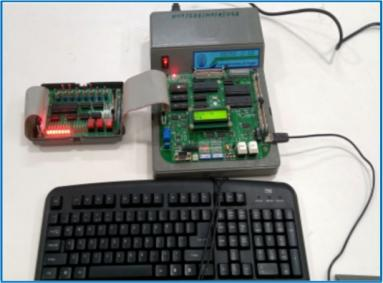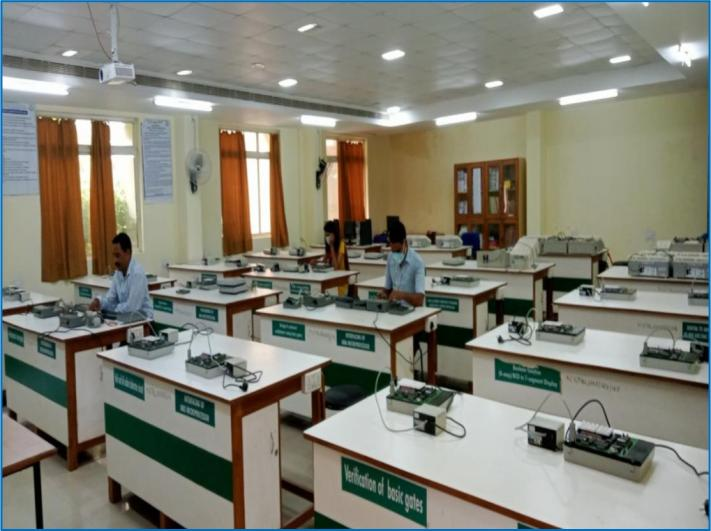Microprocessor Laboratory
The Microprocessor Laboratory emphasizes writing, verification, and hands-on practice of assembly language programming for 8085, 8086, and 8051 processors using standard trainer kits and simulation platforms. It also provides practical training in interfacing peripheral devices with processors. Additionally, this lab facilitates the understanding and hands-on practice of ATmega microcontrollers and their use in generating PWM pulses. -The key focus areas of this lab are microprocessors, microcontrollers, and their use in various real-time applications. The objectives of the lab are that, upon completion, students will be able to understand the concepts of microprocessors, microcontrollers, and interfacing, evaluating different microprocessor and microcontroller programming, and applying program logic to fields such as motor control applications, enabling them to build their own projects.
Microprocessor and Microcontroller Trainer kit: The Microprocessor Lab is equipped with 8085, 8086, and 8051 trainer kits, providing students with hands-on practice in assembly language programming. These kits offer practical experience in understanding and implementing microprocessor and microcontroller concepts.
– 8255 interfacing board: The 8255 interfacing board is designed to facilitate the connection of peripheral devices to microprocessors, enabling the input and output operations. It provides a versatile interface for students to experiment with and understand data transfer between microprocessors and external hardware.
– DC motor control interfacing board: The DC motor control interfacing board with a microprocessor allows for precise control of motor speed and direction through programming. This setup helps students learn about motor control techniques and the integration of microprocessors in real-world applications.
– Traffic light control interfacing board: The traffic light control interfacing board using a microprocessor enables students to design and implement traffic signal sequences through programming. This board provides a practical application of microprocessor control in managing traffic systems and learning timing algorithms.


